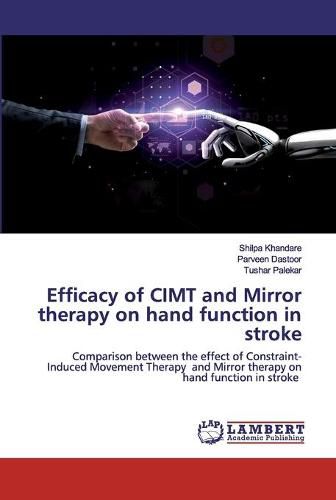Readings Newsletter
Become a Readings Member to make your shopping experience even easier.
Sign in or sign up for free!
You’re not far away from qualifying for FREE standard shipping within Australia
You’ve qualified for FREE standard shipping within Australia
The cart is loading…






This title is printed to order. This book may have been self-published. If so, we cannot guarantee the quality of the content. In the main most books will have gone through the editing process however some may not. We therefore suggest that you be aware of this before ordering this book. If in doubt check either the author or publisher’s details as we are unable to accept any returns unless they are faulty. Please contact us if you have any questions.
Neuroplasticity is formed on the concept of neuro-rehabilitation of the nervous system. The foundation of stroke rehabilitation observed with constraint-induced movement therapy and mirror therapy are exercises based on the concept of neuroplasticity. With the therapies mentioned above, those who have suffered a stroke are able to make recovery or improvements in some or all motor functions through neuroplasticity. This is due to the fact that the more the stroke patient uses their brain through exercise the stronger it will grow. When the post stroke patient performs repetitive tasks originally involving the use of damaged regions of the brain, it forces the brain and nervous system to adapt and find new ways to execute those movements properly by way of new connections.
$9.00 standard shipping within Australia
FREE standard shipping within Australia for orders over $100.00
Express & International shipping calculated at checkout
This title is printed to order. This book may have been self-published. If so, we cannot guarantee the quality of the content. In the main most books will have gone through the editing process however some may not. We therefore suggest that you be aware of this before ordering this book. If in doubt check either the author or publisher’s details as we are unable to accept any returns unless they are faulty. Please contact us if you have any questions.
Neuroplasticity is formed on the concept of neuro-rehabilitation of the nervous system. The foundation of stroke rehabilitation observed with constraint-induced movement therapy and mirror therapy are exercises based on the concept of neuroplasticity. With the therapies mentioned above, those who have suffered a stroke are able to make recovery or improvements in some or all motor functions through neuroplasticity. This is due to the fact that the more the stroke patient uses their brain through exercise the stronger it will grow. When the post stroke patient performs repetitive tasks originally involving the use of damaged regions of the brain, it forces the brain and nervous system to adapt and find new ways to execute those movements properly by way of new connections.